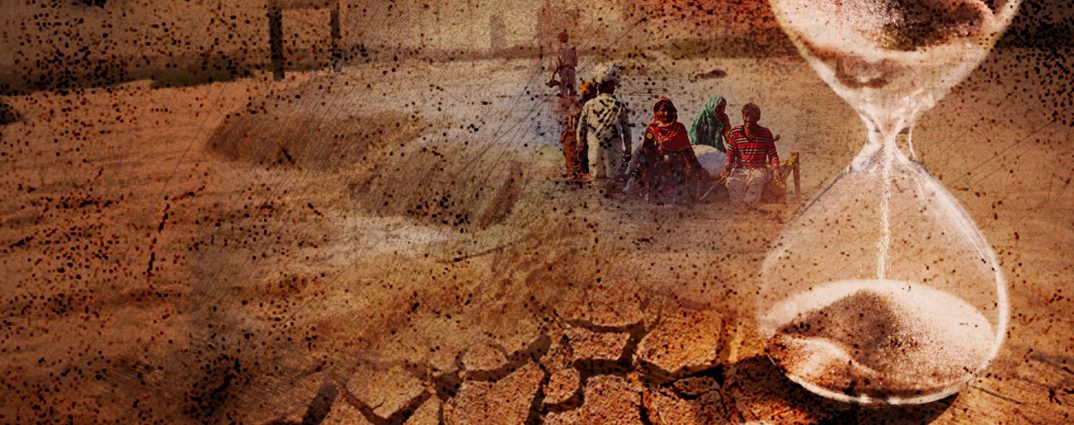DERA ISMAIL KHAN:
The district of Dera Ismail Khan has recently endured devastating floods, droughts, and cyclones, resulting in the loss of thousands of lives, displacement of residents, destruction of livelihoods, and significant damage to infrastructure.
The events are a stark reminder that the district is one of the country’s most vulnerable to the effects of climate change, potentially presaging an increase in the frequency and severity of natural hazards in the coming decades.
Abdul Haleem Baloch, an agricultural expert, stated that climate change is expected to significantly impact DI Khan, leading to reduced agricultural productivity, increased variability in water availability, heightened soil erosion along the Indus River, and more frequent extreme climatic events.
Addressing these risks requires integrating climate change into national strategies and policies and investing in climate-smart infrastructure, businesses, and skills.
To adapt, measures may include developing crop varieties with greater heat and drought tolerance, modernising irrigation infrastructure, employing water-saving technologies, integrated watershed management, reforesting catchment areas, building additional water storage, diversifying energy sources with investments in renewable and small hydropower projects, improving weather forecasting and warning systems, retrofitting critical energy infrastructure, and constructing dikes or village protection walls.
Crops are categorised into two: Rabi and Kharif. Rabi crops are sown in autumn, i.e., October-December, and are harvested in spring (March-April). Wheat is the major Rabi crop. Crops sown in summer are called Kharif crops.
The Kharif crop season is generally longer in Pakistan, starting with sugarcane in February, cotton in March-May, rice in June-July, and maize in July-August.
The major cropping patterns are: (i) rice-wheat, (ii) maize-wheat, (iii) cotton-wheat, (iv) sugarcane-wheat, and (v) coarse grain-wheat, along with some other minor patterns.
Crops grown in irrigated areas and those under spate farming systems are susceptible to the amount of water available and temperature variability. It is estimated that with a temperature rise (+0.5°C-2°C), agricultural productivity will decrease by around 8%-10% by 2040.
Different simulation studies, using the crop-growth simulation model, estimated a decrease in the yield of major crops, specifically wheat and rice, and the length of the growing season in four agro-climatic zones of Pakistan.
The agricultural expert said the model predicted the largest decrease of around 14 days for a 1°C rise in temperature in the growing season’s length of wheat in the northern mountainous region compared to southern Pakistan.
Climate change has impacted and strained the agriculture sector in the region and has disrupted the entire pattern of cultivation. The sowing and harvesting of different crops, especially wheat, have changed considerably in terms of months depending on rain patterns and weather.
In rain-fed/flood-irrigated areas, the availability of water is dependent on rains, which have changed their pattern. The monsoon rains are either scarce or too heavy, impacting rain-fed/flood-irrigated areas.
Scarce rains make the area barren, while heavy rains benefit rain-fed areas and damage flood-irrigated regions, resulting in damage to flood channels and causing floods.
Similarly, the winter rains required in December and January, when the crops need water the most, have shifted to March and April, which instead of doing good, adversely affects the crops.
The sowing of wheat and grain used to be done in October, but due to the severity of the weather, it has been shifted to November.
Similarly, harvesting, which used to be done in May, has shifted to April due to extremely hot weather. The new variety of seeds introduced by the Agriculture Department to combat the effects of climate change has not been used by farmers due to a lack of knowledge and lack of access to the facility.
Due to recent flash floods from the Suleiman Ranges, the height of lands has risen by 3-4 feet due to the deposit of heavy silt, requiring extensive levelling and preparation of land for cultivation, which small farmers do not have the financial capacity to undertake.
The agriculture expert added that “what is needed is to immediately mobilise seeds and tractors.”
Sowing the Rabi crop starts in the last week of September and continues into early or middle November. From the now inundated area in plains alone, one may expect to harvest 20,000 tons of wheat, 11,000 tons of chickpeas, 8,400 tons of edible oilseed, and 7,000 tons of coriander, according to the agricultural expert.
Supporting farmers with the Rabi crop will restore their damaged lives. As many of these farmers have lost their means of production (including seeds) in the flood or were impoverished due to the droughts in the preceding years, aid on a crash basis is needed.
Some of the seeds may be mobilized by farmers, but the larger part will not.
Moreover, the surface of the land has risen by three feet due to heavy deposits of silt during recent floods.
Extensive meetings of agriculture experts from the Agriculture Department with farmer communities in the target areas for the dissemination of information on the impacts of climate change on agriculture must be initiated, and steps must be taken to mitigate the effects.
Providing financial support, modern technology, and better infrastructure will improve the livelihoods of farmers, reduce poverty, and uplift rural communities.
Strong and effective linkages of the farmers shall be developed with the Agriculture Department of Khyber Pakhtunkhwa to tackle challenges and provide better crop production in the district.




